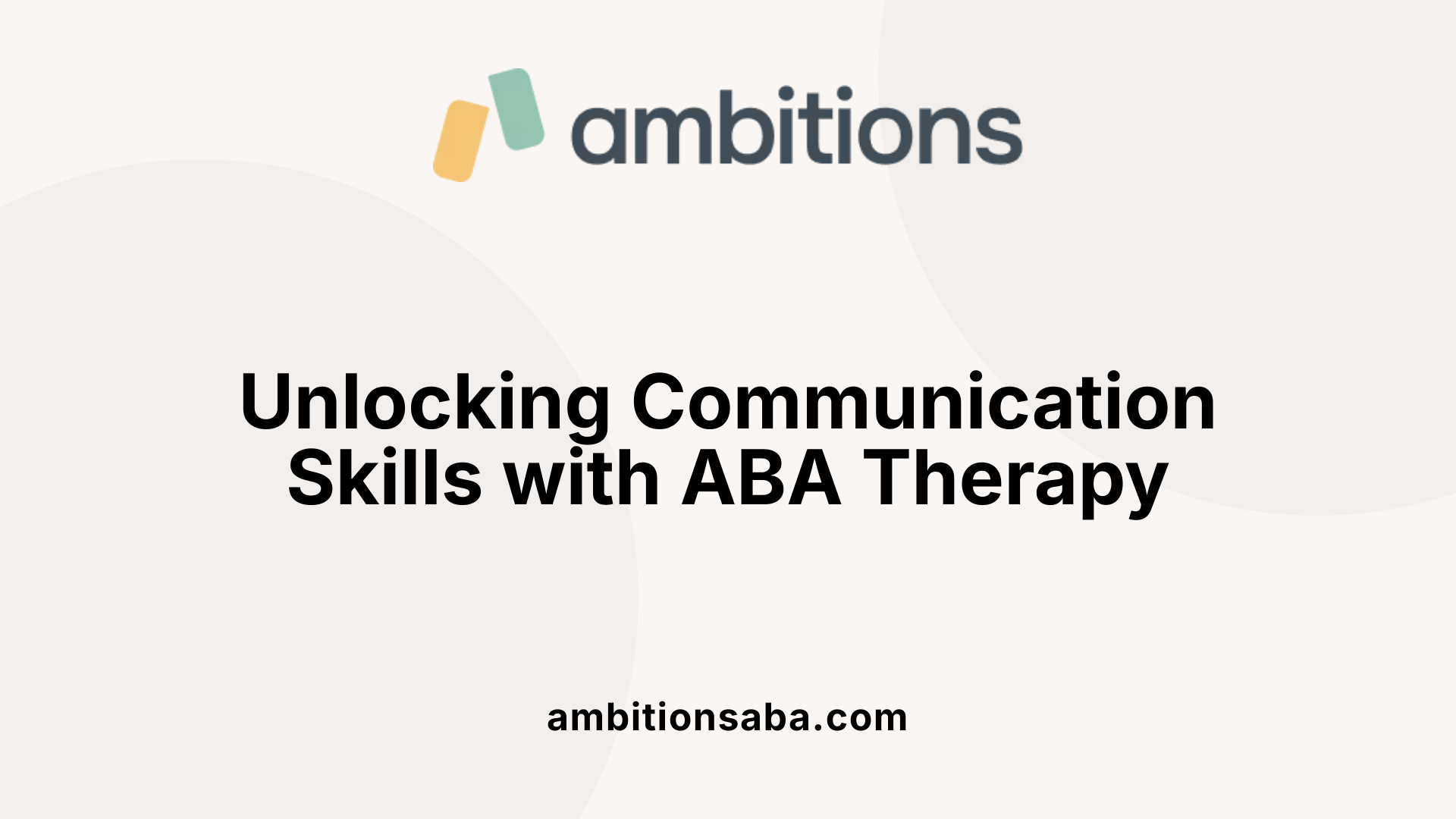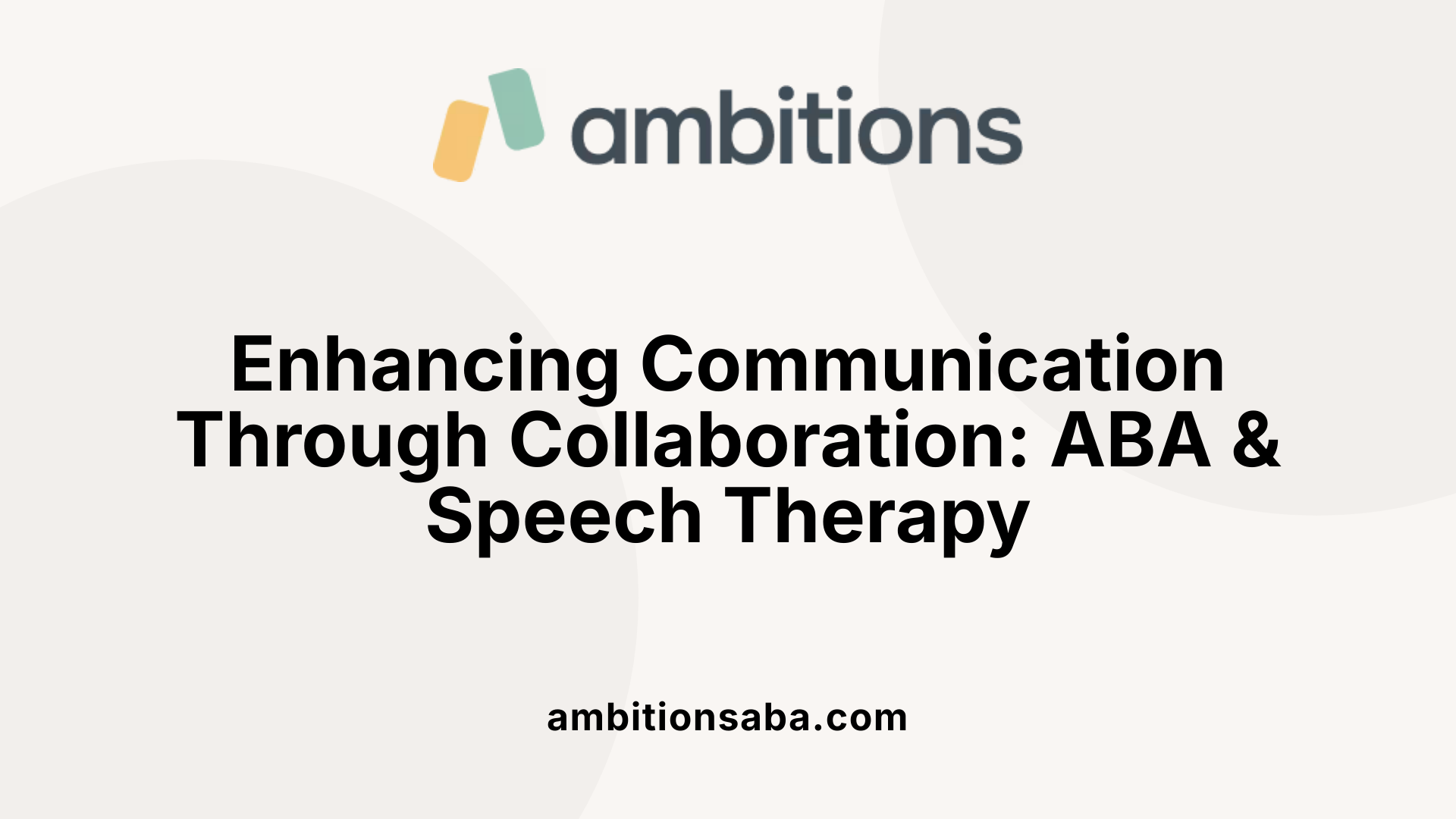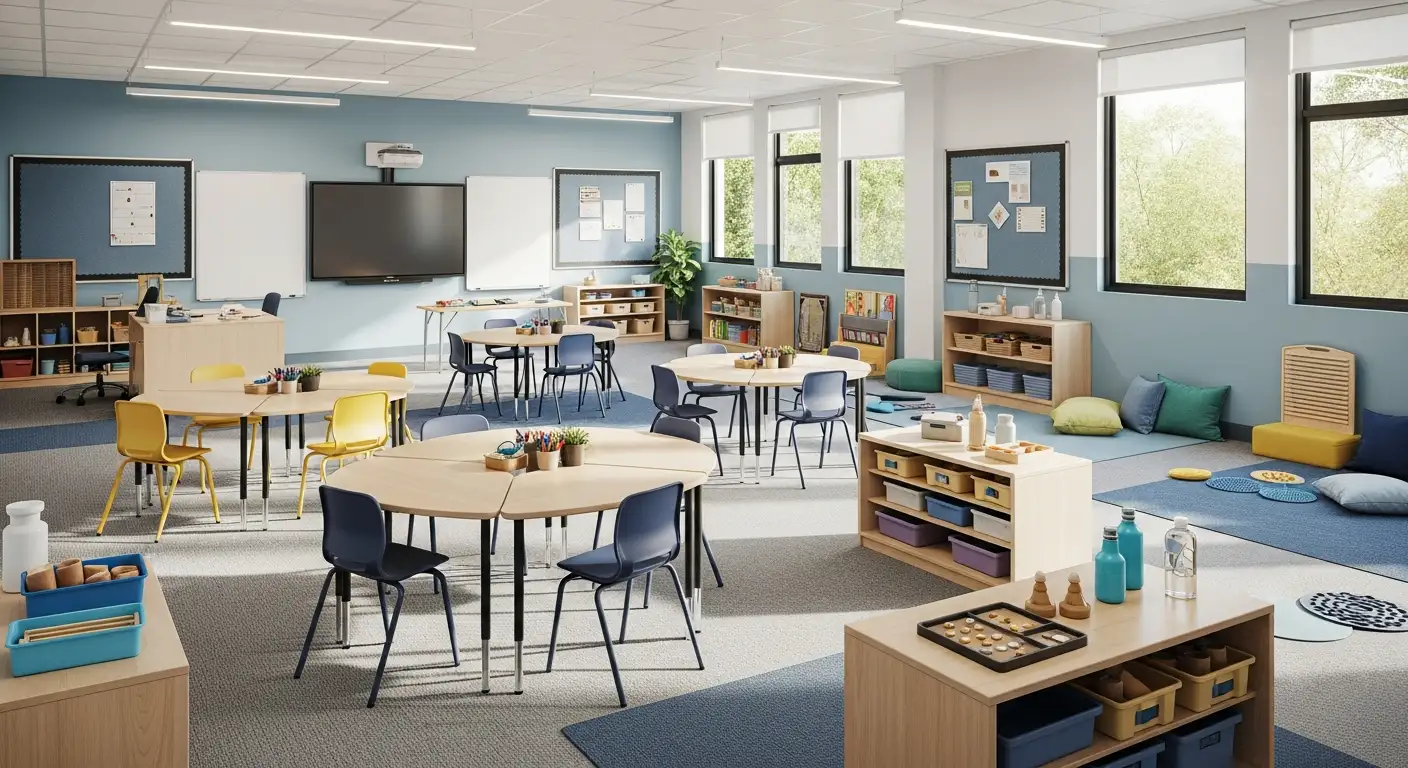Bridging Behavior and Communication in Autism Therapy
Applied Behavior Analysis (ABA) therapy is a cornerstone intervention for children with Autism Spectrum Disorder (ASD), widely recognized for its evidence-based approach in fostering meaningful behavioral changes. One of the most critical developmental areas ABA targets is communication — an essential skill that underlies social interaction, learning, and independence. This article explores how ABA therapy supports communication development, highlighting synergy with speech therapy, core ABA techniques aimed at communication, and the role of collaboration and family involvement in achieving sustainable progress.
Understanding ABA Therapy and Its Role in Communication Development

What is applied behavior analysis (ABA) therapy?
Applied behavior analysis (ABA) therapy is a scientifically-supported approach that utilizes principles of learning and behavior to improve socially significant skills and reduce problematic behaviors. It involves creating individualized programs by qualified behavior analysts, using techniques such as positive reinforcement, task analysis, and prompting. These programs focus on increasing skills in communication, socialization, adaptive living, and behavior management.
ABA assesses how environmental factors influence behaviors through functional assessments, which allow for precise, targeted interventions. Structured methods like Discrete Trial Training (DTT) and naturalistic strategies such as Pivotal Response Treatment are adapted to meet each child’s unique needs. ABA is widely recognized as an effective treatment for children with autism spectrum disorder (ASD) and is supported by extensive research.
How does ABA target communication skills?
ABA therapy uses a variety of techniques to promote communication development. It focuses on both verbal and nonverbal communication, breaking complex skills into smaller, manageable steps through methods like DTT. Functional Communication Training (FCT) is a key component, teaching children to replace challenging behaviors with effective communication methods, reducing frustration and increasing independence.
Verbal Behavior Therapy (VBT) categorizes language into functional units such as mands (requests) and tacts (labels), encouraging children to use language meaningfully. ABA also supports nonverbal communication cues like facial expressions and body language.
Core ABA techniques supporting communication
Several interactive and evidence-based techniques form the foundation of ABA’s communication approach:
- Positive reinforcement: Rewarding communication attempts to motivate and increase engagement.
- Prompting and fading: Providing cues or support initially, then gradually reducing help to foster independence.
- Role-playing and modeling: Practicing social interactions and communication in structured settings.
- Use of AAC tools: Incorporating augmentative and alternative communication devices like PECS, communication boards, and speech-generating devices to support verbal and nonverbal communication.
- Natural Environment Teaching (NET): Practicing skills in real-life contexts to promote generalization.
Research evidence on ABA effectiveness
Multiple studies have shown that early ABA intervention leads to significant improvements in speech, comprehension, and social skills for children with ASD. Research by Green (1996) and Sallows & Graupner (2005) supports ABA’s impact on communication gains. The method is effective across various states and settings, with local clinics using ABA to foster early communication and social development.
ABA’s structured yet flexible strategies, including data-driven progress tracking, ensure personalized adjustments for each child’s treatment plan. Collaborative efforts among therapists, parents, and speech-language pathologists enhance outcome consistency. Celebrating small communication milestones further encourages steady and joyful progress towards meaningful communication.
How ABA Therapy Helps Improve Communication in Children with Autism

How does ABA therapy help individuals with autism?
ABA therapy uses a science-based approach to understand and modify behaviors by analyzing environmental factors that influence them. It focuses on increasing helpful behaviors such as social skills, communication, and independence while reducing challenging behaviors. Treatment is personalized, using data-driven assessments to tailor interventions effectively to each child's evolving needs.
Mechanisms of behavior modification in ABA
ABA applies principles like positive reinforcement to encourage desired behaviors, including communication attempts. Techniques such as prompting and fading guide children towards independent responses by gradually reducing assistance. Discrete Trial Training (DTT) and Natural Environment Teaching (NET) break down skills into manageable steps and promote real-world application respectively.
Specific communication behaviors ABA targets
ABA addresses verbal, nonverbal, and functional communication strategies. It teaches social behaviors like eye contact and turn-taking, crucial for effective conversation. Nonverbal cues like body language and facial expressions are also incorporated to enhance understanding and expression.
Stepwise teaching of communication skills
Skills are taught in incremental steps to build confidence and mastery. For example, Verbal Behavior Therapy (VBT) categorizes language functions into components such as Mands (requests) and Tacts (labels) to foster meaningful language use. Structured methodologies enable systematic progression from simple to complex communication.
Role of reinforcement and prompting
Positive reinforcement celebrates every communication success, increasing motivation and engagement. Prompting techniques help initiate responses, while fading promotes independence by slowly removing prompts as skills develop.
Functional Communication Training (FCT)
FCT replaces challenging behaviors with effective communication methods, reducing frustration and promoting functional use of language. It supports children in expressing needs and desires appropriately, improving overall interaction.
By combining these approaches, ABA promotes significant improvements in communication for children with autism, helping them express themselves and engage socially in meaningful ways.
Collaboration Between ABA and Speech Therapy to Enhance Communication Outcomes

Why Is an Integrated Therapy Approach Important?
Addressing the complex communication challenges in children with Autism Spectrum Disorder (ASD) requires a combined effort. Integrating Applied Behavior Analysis (ABA) and speech therapy creates a comprehensive approach that targets both behavior and communication, promoting well-rounded developmental progress.
How Does ABA Complement Speech Therapy?
ABA therapy offers strategies like positive reinforcement, Discrete Trial Training (DTT), and Verbal Behavior Therapy (VBT) which break down communication skills into manageable parts. These methods help prepare children to benefit fully from speech therapy by establishing foundational social and communication behaviors such as eye contact, turn-taking, and understanding the purpose behind words.
ABA also manages challenging behaviors that might hinder speech therapy, making children more receptive to learning. By teaching both verbal and nonverbal communication through techniques like role-playing and modeling, ABA sets the stage for speech-language pathologists to build upon these skills with more complex language and social communication practices.
What Role Do Augmentative and Alternative Communication (AAC) Tools Play?
AAC devices—including communication boards, Picture Exchange Communication Systems (PECS), and Speech-Generating Devices (SGDs)—serve as bridges for children who are nonverbal or minimally verbal. ABA and speech therapy jointly incorporate these tools to facilitate communication and promote eventual verbal skills development.
How Do Therapists Collaborate in Assessment and Goal Setting?
Collaboration allows for thorough assessments and personalized intervention plans considering all facets of a child's development. ABA therapists and speech-language pathologists work together to set measurable goals, reinforcing learned skills consistently across different environments to support generalization.
Why Is Parental Involvement Essential?
Parents play a crucial role in reinforcing strategies learned during therapy sessions. Training families ensures consistency at home, amplifying communication gains and behavioral improvements. This collaboration among therapists and families fosters a supportive network, making the learning process more effective and meaningful for the child.
Practical ABA Techniques Supporting Communication Development

What is the typical process for implementing ABA therapy?
ABA therapy begins with a thorough assessment by a Board Certified Behavior Analyst (BCBA) to understand the child's current skills and needs. From this, a personalized, data-driven plan is created with clear, measurable goals. Therapy uses structured techniques such as Discrete Trial Training (DTT), Natural Environment Teaching (NET), and positive reinforcement to encourage communication and other desired behaviors. Continuous data monitoring guides adjustments, while family involvement ensures skills generalize across environments.
Discrete Trial Training (DTT) for communication
DTT breaks down communication skills into small, manageable trials. Each trial targets a specific behavior, such as making a request or labeling an object. Through repeated practice with prompting and positive reinforcement, children build confidence and mastery in communication step-by-step.
Natural Environment Teaching (NET)
NET applies communication practice during everyday interactions and routines. Instead of isolated exercises, children learn to use skills in real-world situations, supporting natural and flexible communication.
Use of AAC tools like PECS and Speech-Generating Devices
Augmentative and Alternative Communication (AAC) tools, such as the Picture Exchange Communication System (PECS) and speech-generating devices, provide essential communication methods for nonverbal or minimally verbal children. These tools facilitate expression and can encourage later verbal skills development.
Role-playing, modeling, prompting, and fading
Interactive methods like role-playing and modeling demonstrate appropriate communication and social behaviors. Prompting supports initial responses, and fading gradually reduces assistance to foster independence.
Teaching nonverbal cues and social skills training
ABA techniques also focus on nonverbal communication, teaching children to recognize and use body language, facial expressions, and social cues. Social skills training helps children navigate conversations, improving their abilities to engage and interact effectively.
Data-driven progress monitoring and generalization strategies
ABA therapy emphasizes systematic data collection to track progress and tailor interventions effectively. Generalization strategies ensure children can apply communication skills across different settings and with various people, reinforcing consistent achievement.
Who Provides ABA Therapy and How Families Can Support Communication Growth

Who provides ABA therapy services?
ABA therapy services are typically delivered by trained and certified professionals such as Board Certified Behavior Analysts (BCBAs), behavior therapists, and registered behavior technicians (RBTs). These experts usually operate within specialized autism-focused clinics, therapy centers, or in-home settings. They create and implement individualized treatment plans based on detailed assessments of the child's unique strengths, challenges, and goals. BCBAs often supervise therapy to ensure quality and consistency.
What is the process for individualized treatment planning?
Therapists develop targeted plans tailored to each child’s abilities and motivations. These plans employ evidence-based methods such as positive reinforcement, functional communication training (FCT), and natural environment teaching (NET). By breaking down skills into manageable steps, therapists build toward complex communication and social interactions.
What is the role of BCBAs and therapists in the team?
BCBAs oversee therapy design, analysis, and adjustment, while behavior therapists and RBTs implement day-to-day interventions. This collaborative approach ensures skill acquisition and behavioral improvements are monitored systematically.
How are families involved in therapy?
Parental involvement and training are vital. Families learn strategies to reinforce progress at home, ensuring consistency and skill generalization. This partnership empowers caregivers to support their child’s communication growth beyond therapy sessions.
How important is celebrating milestones and motivation?
Recognizing small communication achievements builds the child’s confidence and motivation. Therapists celebrate progress using positive reinforcement, making learning enjoyable and encouraging ongoing effort.
How is communication skill generalization ensured across environments?
ABA therapy emphasizes practicing skills in diverse settings—at home, school, and community. Collaborative efforts between therapists and families promote consistent use and adaptation of communication skills, supporting real-world application.
Through the combined expertise of professionals and the support of families, ABA therapy fosters meaningful developmental gains in communication for children with autism.
Supporting Communication Through ABA: A Collaborative Journey
Communication development in children with autism profoundly benefits from the structured, individualized, and evidence-based approaches inherent to Applied Behavior Analysis (ABA) therapy. By breaking down complex communication skills into manageable steps and utilizing reinforcement and prompting, ABA promotes steady progress toward meaningful interaction. When paired with speech therapy and supported by dedicated professionals and involved families, ABA fosters a comprehensive, holistic environment for skill acquisition. Regular data collection and emphasis on generalization ensure gains extend beyond therapy settings to everyday life. Ultimately, collaboration, consistency, and celebration of milestones empower children with autism to improve their communication and engage more fully with the world around them.
References
- ABA and Speech Therapy Collaboration
- How ABA Therapy Builds Stronger Language Skills
- 10 Communication Game-Changers for Your Autistic Child
- Applied Behavior Analysis (ABA)
- Applied Behavior Analysis (ABA)
- What Is Applied Behavior Analysis (ABA)?
- Applied behavior analysis
- Applied Behavior Analysis (ABA)



